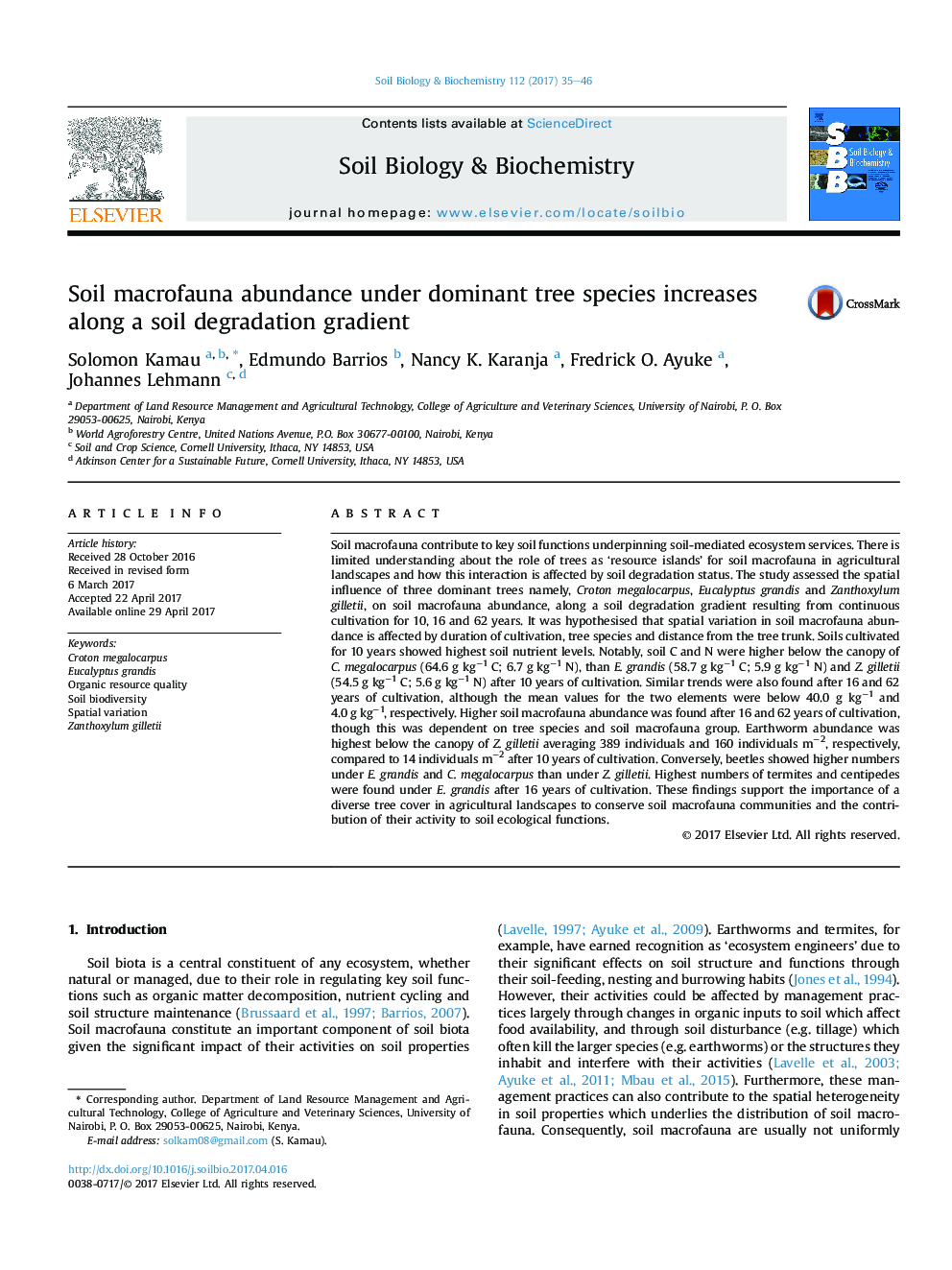| کد مقاله | کد نشریه | سال انتشار | مقاله انگلیسی | نسخه تمام متن |
|---|---|---|---|---|
| 5516335 | 1542572 | 2017 | 12 صفحه PDF | دانلود رایگان |
- Soil macrofauna increased with increasing duration of cultivation.
- Trees shape the spatial patterns of soil macrofauna distribution and abundance.
- Highest earthworm numbers found below the canopy of Zanthoxylum gilletii.
- Highest number of termites and centipedes below the canopy of Eucalyptus grandis.
Soil macrofauna contribute to key soil functions underpinning soil-mediated ecosystem services. There is limited understanding about the role of trees as 'resource islands' for soil macrofauna in agricultural landscapes and how this interaction is affected by soil degradation status. The study assessed the spatial influence of three dominant trees namely, Croton megalocarpus, Eucalyptus grandis and Zanthoxylum gilletii, on soil macrofauna abundance, along a soil degradation gradient resulting from continuous cultivation for 10, 16 and 62 years. It was hypothesised that spatial variation in soil macrofauna abundance is affected by duration of cultivation, tree species and distance from the tree trunk. Soils cultivated for 10 years showed highest soil nutrient levels. Notably, soil C and N were higher below the canopy of C. megalocarpus (64.6 g kgâ1 C; 6.7 g kgâ1 N), than E. grandis (58.7 g kgâ1 C; 5.9 g kgâ1 N) and Z. gilletii (54.5 g kgâ1 C; 5.6 g kgâ1 N) after 10 years of cultivation. Similar trends were also found after 16 and 62 years of cultivation, although the mean values for the two elements were below 40.0 g kgâ1 and 4.0 g kgâ1, respectively. Higher soil macrofauna abundance was found after 16 and 62 years of cultivation, though this was dependent on tree species and soil macrofauna group. Earthworm abundance was highest below the canopy of Z. gilletii averaging 389 individuals and 160 individuals mâ2, respectively, compared to 14 individuals mâ2 after 10 years of cultivation. Conversely, beetles showed higher numbers under E. grandis and C. megalocarpus than under Z. gilletii. Highest numbers of termites and centipedes were found under E. grandis after 16 years of cultivation. These findings support the importance of a diverse tree cover in agricultural landscapes to conserve soil macrofauna communities and the contribution of their activity to soil ecological functions.
Journal: Soil Biology and Biochemistry - Volume 112, September 2017, Pages 35-46
